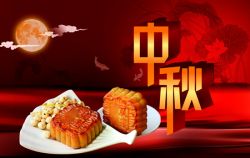Difference between revisions of "CIIC:Today's featured article/September 24, 2018"
imported>Ciic (Created page with 'thumb|200px|left|Cao Yu Originally named Wan Jiabao, '''Cao Yu''' (Chinese: 曹禺) was born on September 24, 1910 in Tianjin. His ancestral home was ...') |
imported>Ciic |
||
| Line 1: | Line 1: | ||
| − | [[ | + | [[file:Mid-Autumn Festival and mooncakes .JPEG|thumb|250px|left|The Mid-Autumn Festival and mooncakes]] |
| − | + | The '''Mid-Autumn Festival''' ('''中秋节''') falls on the 15th day of the 8th lunar month, usually in mid or late September according to Gregorian calendar. It is a traditonal Chinese festival during which the most popular food is [[moon cake]]s. | |
| + | |||
| + | The festival has a long history. In ancient China, emperors followed the rite of offering sacrifices to the sun in spring and to the moon in autumn. Historical books of the Zhou Dynasty had had the word "Mid-Autumn". Later aristocrats and literary figures helped expand the ceremony to common people. They enjoyed the full, bright moon on that day, worshipped it and expressed their thoughts and feelings under it. By the [[Tang Dynasty]] (618-907), the Mid-Autumn Festival had been fixed, which became even grander in the [[Song Dynasty]] (960-1279). In the [[Ming]] (1368-1644) and [[Qing]] (1644-1911) dynasties, it grew to be a major festival of China. ([[Mid-autumn Festival|More...]]) | ||
Latest revision as of 05:22, 12 September 2018
The Mid-Autumn Festival (中秋节) falls on the 15th day of the 8th lunar month, usually in mid or late September according to Gregorian calendar. It is a traditonal Chinese festival during which the most popular food is moon cakes.
The festival has a long history. In ancient China, emperors followed the rite of offering sacrifices to the sun in spring and to the moon in autumn. Historical books of the Zhou Dynasty had had the word "Mid-Autumn". Later aristocrats and literary figures helped expand the ceremony to common people. They enjoyed the full, bright moon on that day, worshipped it and expressed their thoughts and feelings under it. By the Tang Dynasty (618-907), the Mid-Autumn Festival had been fixed, which became even grander in the Song Dynasty (960-1279). In the Ming (1368-1644) and Qing (1644-1911) dynasties, it grew to be a major festival of China. (More...)
